Consider this basic recursion in Python:
def fibonacci(number):
if number == 0: return 0
elif number == 1:
return 1
else:
return fibonacci(number-1) + fibonacci(number-2)
Which makes sense according to the (n-1) + (n-2) function of the Fibonacci series.
How does Python execute recursion that contains another recursion not within but inside the same code line? Does the 'finobacci(number-1)' complete all the recursion until it reaches '1' and then it does the same with 'fibonacci(number-2)' and add them?
For comparison, the following recursive function for raising a number 'x' into power 'y', I can understand the recursion, def power calling itself until y==0 , since there's only one recursive call in a single line. Still shouldn't all results be '1' since the last command executed is 'return 1' when y==0, therefore x is not returned?
def power(x, y):
if y == 0:
return 1
else:
return x*power(x, y-1)


